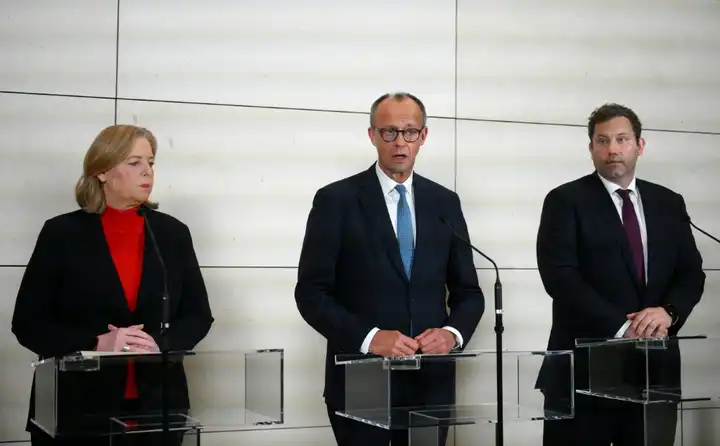Germany has unveiled one of its most ambitious and debt-heavy budgets in recent history, marking a dramatic shift from its traditional fiscal conservatism. The 2026 budget, tabled in Berlin, commits the government to nearly €98 billion in new borrowing, a sharp increase from earlier estimates and a clear sign that the Merz administration is pivoting toward expansionary spending.
The move comes at a time when Germany, long considered Europe’s economic anchor, is grappling with slowed industrial output, high energy costs and supply chain disruptions. With the economy needing strategic intervention, Berlin is opting for what officials have called “necessary debt,” aimed at cushioning industries and fueling economic renewal.
Record Borrowing to Finance Reforms
The budget outlines total expenditures of €524.5 billion, covering infrastructure development, defence modernization, energy transition, and technology investment. This massive spending plan underscores Germany’s intent to regain competitive strength in a rapidly shifting global economy.
Economic analysts note that Berlin’s decision reflects a recognition that Germany can no longer rely solely on austerity or the traditional “debt brake” model. Instead, the government is leaning into borrowing as a tool to protect its industrial base and prepare the country for long-term economic shifts.
Power Relief and Tax Reversals Dominate Measures
Among the measures expected to have an immediate impact is the government’s announcement of reduced industrial power prices from 2026 to 2028. This initiative targets energy-intensive sectors such as steel, chemicals, automotive manufacturing and heavy engineering — industries that have been struggling under the weight of high operational costs.
Business associations in Germany argue that the relief is critical not just for competitiveness but also for preserving thousands of jobs. By lowering energy prices, the government hopes to stabilize production and prevent further relocation of factories to cheaper markets abroad.
Another major move is the reversal of a proposed aviation tax increase. The decision, which effectively cancels a levy that would have generated around €350 million, was widely welcomed by airlines and tourism stakeholders. Officials say the reversal is aimed at supporting the recovery of travel industries after prolonged turbulence in the global market.
A New Strategy for a Changing World
The Merz administration insists that the increased borrowing is part of a broader transformation strategy aimed at protecting Germany’s economic leadership. With global powers like China and the United States investing heavily in technology, industrial power and defence, Germany is under pressure to keep pace.
The government’s new fiscal direction also signals a growing acceptance within Berlin that rigid debt restrictions may hinder rather than strengthen the nation’s long-term prospects. While the debt brake remains legally in place, the 2026 budget demonstrates that strategic flexibility is becoming more common in German financial planning.
Concerns Over Fiscal Responsibility
Despite optimism from certain sectors, critics have expressed strong concerns. Opposition parties warn that Germany is setting itself on a dangerous trajectory by accumulating large amounts of debt in a short period. They argue that the country risks undermining its reputation for financial prudence and exposing future generations to heavier obligations.
Economists are split: some see the budget as a necessary stimulus package during an uncertain global economic period, while others argue it may lead to inflationary pressure and higher borrowing costs down the line.
Impact on Europe and Global Markets
Germany’s budget decisions carry significant weight beyond its borders. As Europe’s largest economy, its policies influence eurozone interest rates, investment trends and financial stability. Analysts say that Germany’s move towards greater borrowing may encourage other European governments to adopt more flexible fiscal strategies.
Global markets are watching closely too. Germany’s willingness to spend big on industrial support could reshape international supply chains, trade relationships and foreign investment patterns.
A High-Stakes Fiscal Gamble
The 2026 budget represents a bold gamble for the Merz government. It aims to protect industries, support households, stimulate recovery and prepare the country for technological transformation — all while managing unprecedented levels of borrowing.
Whether this strategy pays off depends on the economy’s ability to grow fast enough to absorb the debt. For now, Germany appears ready to trade fiscal restraint for national resilience, and the world is watching to see how this economic experiment unfolds.








